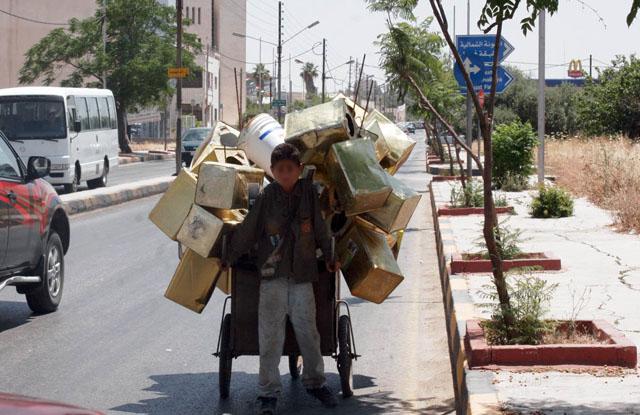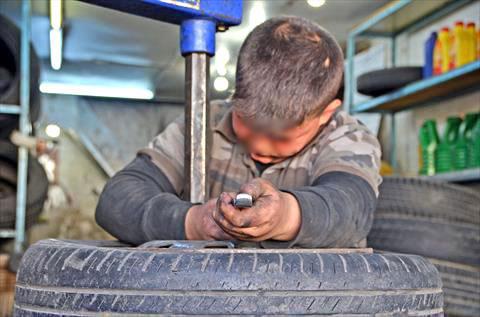You are here
‘Urgent action needed to address child labour among Syrian refugees’
By JT - Jul 02,2015 - Last updated at Jul 02,2015

An estimated 2 million children are now living outside Syria as refugees, with many of them working to support their families, according to a report released Thursday (Photo courtesy of UNICEF)
AMMAN — Close to half of all Syrian refugee children in Jordan are now the joint or sole family breadwinners in households surveyed by UNICEF and Save the Children, according to a report released on Thursday.
The conflict and humanitarian crisis in Syria are pushing an ever increasing number of children into exploitation in the labour market, and much more needs to be done to reverse the trend, the report said.
An estimated two million children are now living outside Syria as refugees.
Inside Syria, children are now contributing to the family income in more than three quarters of surveyed households, while in some parts of Lebanon, children as young as six years old are reportedly working.
The most vulnerable of all working children are those involved in armed conflict, sexual exploitation and illicit activities including organised begging and child trafficking, according to a UNICEF statement.
“The Syria crisis has dramatically reduced family livelihood opportunities and impoverished millions of households in the region, resulting in child labour reaching critical levels,” the statement quoted Roger Hearn, regional director for Save the Children in the Middle East and Eurasia, as saying.
“As families become increasingly desperate, children are working primarily for their survival. Whether in Syria or neighbouring countries, they are becoming main economic players.”
Syria was a middle-income country before the war in 2011 and almost all Syrian children went to school, with literacy rates over 90 per cent.
Four-and-a-half years into the conflict, the country is beset with destitution and misery, with four in five people in Syria estimated to be living in poverty and 7.6 million internally displaced, the statement said.
The report finds that a spiralling number of children are employed in harmful working conditions, risking serious damage to their health and well-being.
“Child labour hinders children’s growth and development as they toil for long hours with little pay, often in extremely hazardous and unhealthy environments,” said Peter Salama, UNICEF regional director for the Middle East and North Africa.
“Carrying heavy loads, being exposed to pesticides and toxic chemicals, and working long hours — these are just some of the hazards working children face every day around the region.”
Three out of four working children surveyed in the Zaatari Refugee Camp have reported health problems at work, according to the report.
A further 22 per cent of children casually employed in the agricultural sector in Mafraq and the Jordan Valley have also been injured while working.
Moreover, children who work are more likely to drop out of school — adding to fears of a “lost generation” of Syrian children.
“UNICEF and Save the Children call on partners and champions of the No Lost Generation Initiative, the wider international community, host governments, and civil society to undertake a series of measures to address child labour inside Syria and in countries affected by the humanitarian crisis,” the statement said.
The relief agencies called for improving access to livelihoods; providing quality and safe education for all children impacted by the crisis; prioritising efforts to end the worst forms of child labour; and investing in strengthening national and community based child protection systems and services.
“Syria’s children are paying a heavy price for the world’s failure to put an end to the conflict,” the report concludes.
Related Articles
Child labourers in urban environments earn between JD3 and JD5 per day and are mainly found working on the street, in shops and in restaurants, according to a report released on Monday.
AMMAN — Child labour has become a serious issue in Jordan, especially during the pandemic, according to officials.The National Child Labour
Nearly a quarter of the children employed in the agriculture sector in Mafraq and the Jordan Valley sustained work-related injuries, according to a report released on Monday.


















